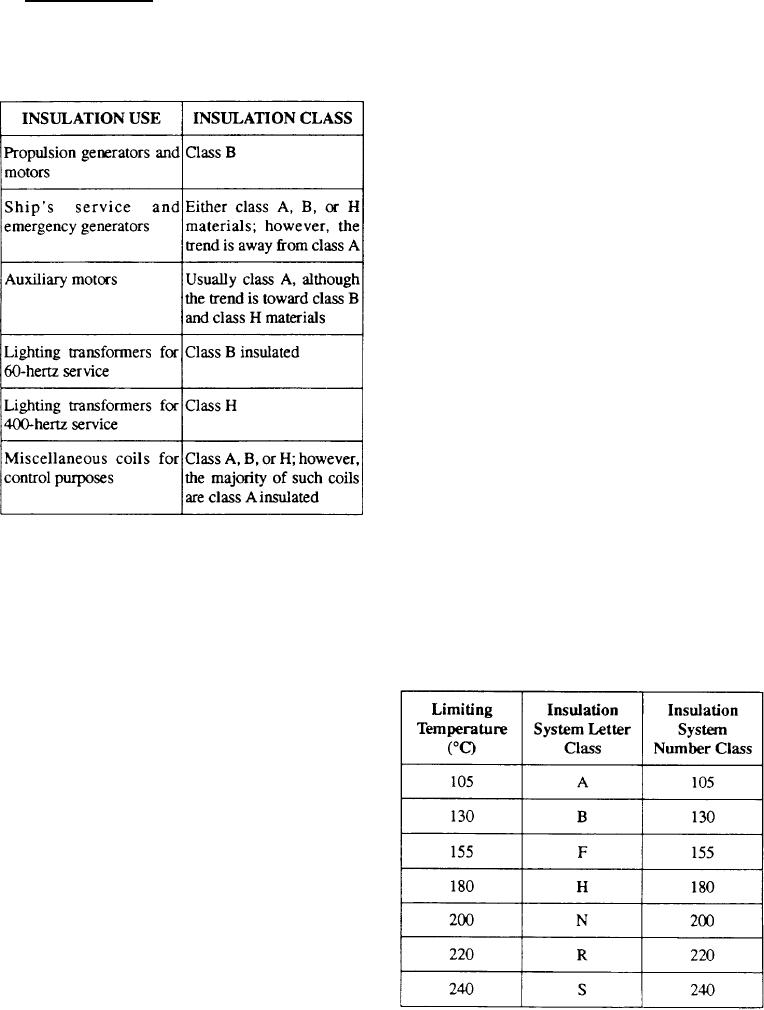
insulation limiting temperature and the sum of the
Class T insulation. Class T insulation is a silicone
ambient and temperature rise temperatures is the
rubber treated glass tape. It is also used in
additional temperature allowed for the hot-spot
reduced-diameter cables in sizes 14 through 2000.
temperature.
For an idea of some insulation uses, look at the table
The ultimate temperature rise of electrical
shown below:
equipment is reached when the rate at which heat is
developed equals the rate at which heat is transferred to
the surrounding atmosphere. The heat developed by
electrical equipment can usually be accurately
measured. However, the temperature of the immediate
surrounding area (ambient temperature) can become
critical to the equipment if proper ventilation is not
maintained.
The maximum allowable temperature rise and the
design ambient temperature allowed for electrical
equipment are usually shown on equipment nameplates,
on equipment drawings, and in technical manuals for
specific equipment. When information is not available
from these sources, refer to NSTM, chapter 300, for
information on the maximum permissible temperature
rises.
The engineering design of ships takes into account
the relationship of cable sizes and resistances with the
cable load currents and temperatures.
Insulation Resistance Measurements.
Temperature Effects on Insulation.
The insulation resistance of shipboard electrical
Very high temperatures that produce actual burning
cable must be measured periodically with an
or charring may destroy insulation in a few seconds. It
insulation-resistance-measuring instrument (Megger)
is important to maintain operating temperatures of
to determine the condition of the cable. Measurements
electrical equipment within their designed values to
avoid premature failure of insulation Temperatures
Table 2-6.--Limiting Temperature of Insulation systems
only slightly in excess of designed values may produce
gradual deterioration, which, though not immediately
apparent, shortens the life of the insulation. As a rule of
thumb, thermal aging will cause the life of insulation
will decrease by 1/2 for every 10 to 15C increase in
the operating temperature above the rated temperature
for the insulation class.
Insulation system classes are designated by letters,
numbers, or other symbols and may be defined as
assemblies of insulation materials in association with
equipment parts. Table 2-6 shows the insulation system
classification used for Navy electrical equipment based
on limiting temperatures. The limiting temperatures of
an insulation system may be established by test or by
service, and depend on an observable temperature rise
of the equipment, design ambient temperature, and
hot-spot temperature. The difference between the
2-16

